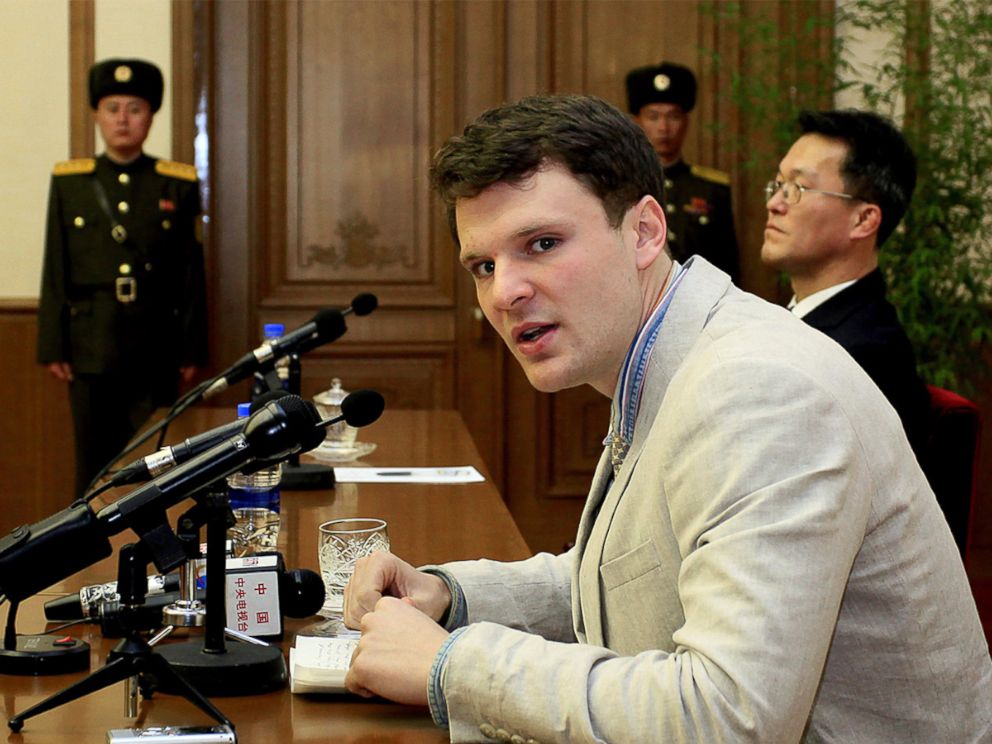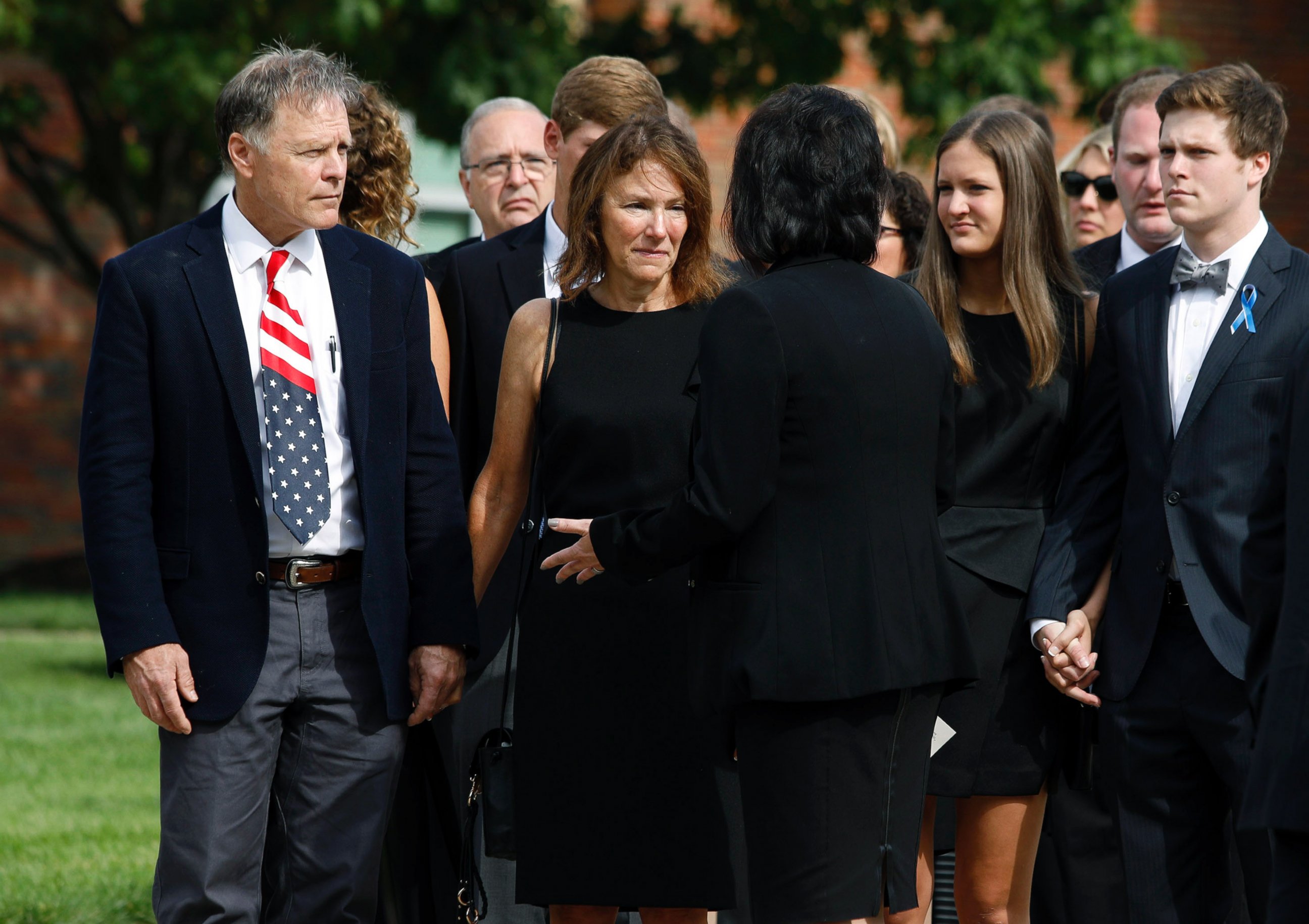After Otto Warmbier’s death, what are Trump’s options for responding to North Korea?
Rex Tillerson is actively considering whether to ban U.S. travel to the country.
— -- As his body is laid to rest in his Ohio hometown, the shock of Otto Warmbier’s death is now giving way to anger -- and the Trump administration is actively weighing how to respond.
“It's a total disgrace what happened to Otto," President Trump has said. "That should never, ever be allowed to happen. It’s a brutal regime, and we’ll be able to handle it.”
Warmbier was held for nearly a year-and-a-half by North Korea, much of that time while in a coma, according to the reclusive country's authoritarian regime. The details of his detention, especially how he ended up in that medical condition, are still unknown.
But the White House -- while happy to have returned Warmbier to his family -- is now deciding if and how it should respond to his death as it aims to “hold North Korea accountable for [his] unjust imprisonment,” according to Secretary of State Rex Tillerson.


Beyond demanding a full account of what happened to Warmbier, the U.S. has few options to respond -- although there are three other U.S. citizens being detained in the country, and any action has to weigh their safety and concerns of a backlash against them.
TRAVEL BAN
Tillerson is actively considering whether to ban U.S. travel to North Korea, the State Department said Tuesday.
"The Secretary has the authority to do it," said spokesperson Heather Nauert. "He just has not come to a conclusion about how this would potentially work, but we’re considering it."
The U.S. strongly discourages travel to North Korea, with a stern travel warning but as of yet no ban. Without diplomatic ties in the country, the government cannot reach Americans held there, except through its protecting power Sweden. And North Korea has a history of using detainees from America or other countries as pawns in negotiations.
“Given the danger to United States citizens in the country, it is time to take the unusual step of imposing a ban,” former U.S. ambassador to South Korea Christopher Hill wrote in an editorial Wednesday. Hill led the U.S. delegation to North Korea nuclear talks under President George W. Bush.
There are restrictions on economic activity with North Korea, through a system of sanctions, and an all-out ban is not without precedent. Previously, the U.S. government has banned travel to countries that were perceived to be too dangerous, including Lebanon during the Lebanese civil war and Libya during some of the Muammar Gadhafi years.
The number of Americans in North Korea is difficult to track, but the country’s only private university employs around 40 U.S. citizens, many dual nationals. In addition, anywhere between 800 and 1250 American tourists visit the country a year, although that number will likely decline after Warmbier’s death, especially as tour companies like Young Pioneer Tours, which Warmbier used, have canceled all future trips for Americans.
PRESSURING OTHER COUNTRIES
The Trump administration may also try to isolate North Korea even more, pressuring its neighbors and economic partners to cut ties.
It’s part of the current strategy to discourage the regime from pursuing its nuclear and missile programs, and according to the acting Assistant Secretary for East Asian and Pacific Affairs, it’s yielded some successes so far.
“We’ve seen a lot of different countries step up and take action on the pressure campaign,” Susan Thornton told reporters Monday.
According to Thornton, those actions include halting visas to North Korean laborers, whose wages usually go straight to the regime; denying landing rights and refueling privileges to North Korea’s national airline; expelling and reducing North Korea’s diplomatic presence in the countries; and interdicting shipments of arms and other sanctioned materials.
NEW SANCTIONS
The administration might also be considering new sanctions against North Korea or third-party entities that do business with the regime, including Chinese companies.
Nauert has declined to say if sanctions are among the considerations, saying only, “The actions that we may or may not take are still being contemplated here, so it’s just too early to say exactly what we’re going to do just yet.”
But even before Warmbier’s death, members of Congress were pushing a new sanctions report on Tillerson last week when he testified on Capitol Hill. The report by the nonprofit C4ADS lays out where the vulnerabilities are in North Korea’s financial networks and supply chains and how new sanctions could disrupt them and bring the regime to heel.
"The next step should be to sanction the Chinese financiers and traders who sustain Kim Jong Un," the Wall Street Journal editorial board urged Thursday. "The U.S. and its allies have to use every sanction and other tool available to prevent the Kim regime from doing to millions what it did to Otto Warmbier."
As the administration reviews, it seems sanctions would likely have to wait. After the U.S.-China summit Wednesday, Tillerson said that China reaffirmed its commitment to fully implement all UN Security Council sanctions, so the White House may give China some time to see that through first.
MILITARY STRIKES
The Trump administration has said that all military options are on the table with regards to North Korea’s ballistic missile and nuclear weapons programs. But the reality is that the impact of military options would be limited and the threat of escalating into an all-out war makes it the least likely of the administration’s options, especially for Warmbier’s death.
Pre-emptive military strikes would likely focus on North Korea's facilities for launching or producing ballistic missiles or its nuclear facilities.
North Korea's nuclear facility at Yongbyon is well-known, but striking it could cause an environmental disaster. Easier targets would be North Korea's missile facilities like the Sohae Satellite Launching Station on the country's northwest coast that has become a center of activity for the country's long-range missile program.
But the greater threat from North Korea is posed by its new medium- and intermediate-range mobile systems that are hard to track by overhead satellites and can be launched on short notice.
If the U.S. were to take military action, potential targets could be North Korea's airfields in Hwangju, Kusong, and Wonsan provinces that have been used over the past year to test new longer-range missiles.
But pre-emptive strikes could lead North Korea to respond militarily, a prospect that carries the risk of risk of hundreds of thousands of civilian casualties.
The majority of North Korea’s million-man army is based just north of the demilitarized zone (DMZ) that is the border with South Korea. And long-range North Korean artillery along the DMZ can easily reach Seoul, South Korea’s capital.
That makes the scenario of a pre-emptive U.S. military strike a risky one and the least likely option available to the Trump administration.



